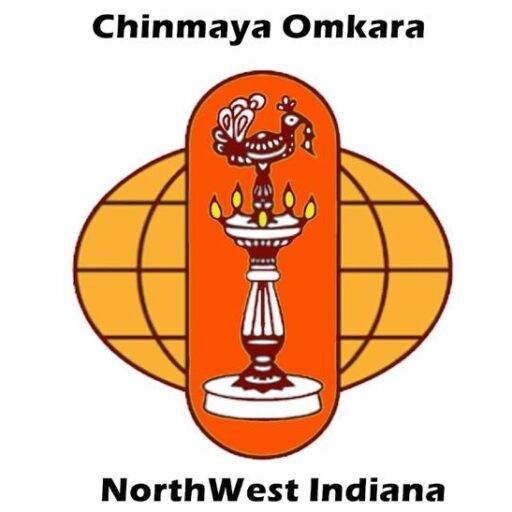Upanishad Course – Chapter 4
Week 7
The term Vedanta means “the knowledge of within”.
The knowledge of within is generally called vision.
Vedanta is therefore described as a vision or darshana.
On the other hand, outside knowledge is facilitated by perception (by seeing or hearing, tasting, etc).
Knowledge of reality comes only from knowledge of vision.
We need to live less by perception and more by vision.
Our Upanishad course is really a reality course.
Review of past classes:
The presence/ our presence/Brahman is felt through the ego, the equipments, the experiences as a sense of incompleteness.
This presence is reminding us of itself. Those who are sensitive to this feeling of incompleteness, they follow this reminder.
We should utilize this sense of incompleteness rather than feel dejected by it.
We can do this by being objective with that which is changing, that way you will not depend on the changing for completeness.
A more advanced practice of utilizing this incompleteness is being more observant of that which is unchanging.
We have been focusing on Sadhana Chatustaya:
- Viveka- Discrimination: High thinking. This triggers #2
- Vairagya- Detachment: Simple living. This triggers #3
- Shatsampatti: This is to ensure that Viveka and Vairagya are nurtured further for our evolution/mumukshutva
- Mumukshutva: Being directed to moksha/reality
The Shanti mantra from Kena Upanishad that references the Shatsampatti. It states:
“May my body be strong, specifically, subtle part of my body (sense organs).
I need this strength/ discipline because all is Brahman but I don’t feel it right now.
May I not let go of this pursuit of Brahman.
May Brahman not let go of me.
All of the virtues described in the Upanishads become my virtues.
May these rest in me, May these rest in me.
I will then become peaceful and I will radiate that”.
Shatsampatti is a plan on changing our lifestyle, a practical part of our journey.
Sama: Quiet mind comes from simple living and high thinking.
Dama: Quiet mind makes the body quiet. Indulgences over a period of time becomes habits and habits are hard to change and end up as Vasanas.
Uparama: More space in body and mind makes me less distracted by pulls inside and outside and engage in my responsibilities. While doing so, I will be tested.
Tithiksha: Since I am being tested, Tithiksha/endurance is needed.
Shraddha: Faith in a teacher makes us focus on him more
Samadhana: Focus or love for the teaching
Evolution of sampatti is sampanna
Mumukshutva: When all the above are achieved, the seeker goes on to have one love in life.
Without the strength nurtured by Viveka, Vairagya and Sampanna, we will not reach Mumukshtva (Noted examples of Mumukshus are Devi Maitreyi, Rishi Nachiketa, Gopis in Bhagavata).
Lesson 4 talks about Anubandha Chatushtaya or design of four facets is the methodology to experience Upanishads/reality.
- Adhikari: Student or Sadhaka
- Vishaya: Subject or Sadhana
- Prayojana: Purpose or Sadhya
- Student engages in the subject, they will experience the purpose which is freedom.
Upanishad (Upa=closely, ni=determinedly, sad=destroy the sense of individuality).
We cannot destroy the sense of individuality by depending on ourselves.
We need an authority to guide us in this destruction, Shabdapramana or Vedapramana, words of the wise.
Vedas are the revealed Knowledge.
The implication is its beyond the individual.
If an individual is dependent on another individual, they will continue to be an individual.
That is why it is hard for egotistical people to have a relationship with a Sadguru, Sastra, Bhagavan.
Only when we depend on a revelation, on that which is beyond, can we go beyond this sense of individuality.
We understand Brahman intellectually, but we don’t love this message.
That is why we don’t benefit from infinitude. We need to love the subject more!
A great way to love the subject is by knowing how much we need it.
The first mantra in first skanda of Kena Upanishad states: “Who directs the mind?
who directed the first prana or breath?
Who directed speech?
Who directed the organs (eyes, ears, etc)?”
The key words in this mantra are Preshitam= directed, Praiyeti= how does this proceed, Ishita= willed, yunakti= engaged.
The disciple is asking not how these equipments work, but why do they work. ‘How’ answers questions in objective science whereas ‘why’ is answered in subjective science.
Instead of thinking about the content of thoughts, we need to focus on what thoughts are, and how do you know thoughts.
The depth of this question is surreal and the application for us is that we need to change our lifestyles to be less about how and more about why.
In Shrimad Bhagavad Gita, this is called Karma yoga, the intention behind our action.
This mantra is indicating to us our six coverings:
#6: Vacha: organ of action
#5: Body
#4: Prana
#3: Mana
#2: Intellect
#1: Ego
If there is a covering, there has to be a center.
In this question, the seeker is asking why these coverings exist.
These sheaths are an assembly.
An assembly for another separate entity and that entity cannot be part of that assembly.
The disciple is asking what his relationship is with the sheaths.
The logical answer is that these sheaths are for you and therefore you are not part of it.
This should get us to understand that there is a center of this assembly, the center is Atman.
Another reference is association. If we have an association with the assembly, this association is for us and we are not part of this entity.
We are the user of the sheaths; we are not the sheaths.
User cannot be the same as used.
The word Grahasta technically means the one who live in a Graha.
When we focus on the how and not why, the house lives in us, we stop living in the house.
The sheaths are using us rather than us using them.
That is a Adharmic way to live as a Grahasta.

